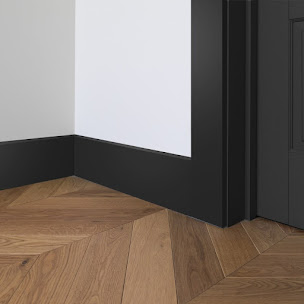Choosing the Best Anti-Slip Grating Material for Long-Lasting Performance
In applications where safety, long-term durability, and minimal maintenance are essential, choosing an Anti Slip Grating for a given application can mean the difference between success and failure. Within industrial facilities, on walkways, marine and shipping decks, and on pedestrian bridges, when surfaces are wet, oiled, or chemically spilled on, the chances of slipping increase moderately too severely. These hazards are often minimized with the use of grating systems, particularly those that are designed with anti-slip features.
Knowing how anti-slip floor grating is constructed helps make informed and timely decisions to purchase a product that meets engineering expectations on safety while providing long-lasting durability, resistance against corrosion, and value.
The Importance of Engineering an Anti-Slip Surface
Workplace safety is a real issue. Slip and fall accidents are a leading cause of workplace injury across many industries, such as manufacturing plants, oil rigs, food processing units, and chemical plants. Floors need to provide sufficient traction when wet, oily, or icy. This is where anti-slip grating is important. Surfaces with the potential for slipping can be improved by incorporating textures or grit-infused coatings, transforming these surfaces into high-friction walking surfaces that enhance safety by minimizing the chance of slips and falls.
Even non-slip gratings have differing qualities. The construction material impacts performance and durability greatly; therefore, system selection can be the difference between a low-maintenance, safe system and a costly, recurring repair issue.
Performance Considerations
Ensure that all performance parameters are considered when selecting anti-slip flooring gratings, like
- Corrosion resistance due to exposure to chemicals, salt water, and weathering.
- Longevity with low maintenance.
- Installation and adaptability to the area of use
Cost-effectiveness through its lifespan
All these parameters relate to the grating’s base material. Metal gratings, for instance, are strong but require extensive treatment to prevent corrosion. Additionally, other composites like anti-slip GRP grating are more effective in harsh environments.
Metal grates perform best in heavy-duty applications due to their strength and protective ability when compared to other materials. Metal Grating made of stainless steel or galvanized steel are widely used in industrial floors, platforms, or trench covers because of their ability to withstand immense loads. Aside from these applications, they are also manufactured with slip-resistive grip features or serrated edges.
As for modern slip-resistant designs like the ones used in aerosol cans, anti-slip metal grating requires frequent maintenance and proper coatings to ensure prolonged durability, particularly in moist or corrosive settings. For instance, in marine environments, without proper care, even galvanized steel succumbs to rust.
Anti-Slip GRP Grating: A Smart Alternative
On the other hand, anti-slip glass-reinforced plastic (GRP) grating is one of the most common materials used in safety flooring because of its lightweight, robust, and slip-resistant structure. This type of flooring is quickly becoming popular due to its non-corrosive nature, especially in places that are exposed to chemicals and saltwater. In comparison to metals, the non-rusting quality of GRP makes it ideal in high-humidity areas.
It exhibits remarkable non-slip properties due to the embedded quartz grit surface, as well as non-conductive flexibility, which contributes to its safety in electrical environments. Furthermore, anti-slip GRP grating is low maintenance and long-lasting, which has proven to make it a cost-effective solution for a few industries.
Achieving Optimal Results
Determining the best material engineered to withstand extreme slip conditions requires a new approach. It is not as simplistic as providing every application with the same solution. There is an optimal equilibrium that meets the criteria of safety, strength, environment, and budget. For example, anti-slip GRP grating is best suited for a wastewater treatment facility, whereas a freight terminal requires the robust resiliency of anti-slip metal grating. Likewise, in places where heavy loads are not applicable, maintaining plastic grating is the best economical option.
Corrosion Resistant, Strong Yet Lightweight
Along with its advantages of low weight and ease of handling, Plastic Grating is highly resistant to rust and chemical exposure, making it a perfect candidate for areas with high levels of corrosion. Its use of advanced polymers makes the plastic grating easy to install while at the same time maintaining its lightness. It also provides food-grade safety for food processing areas and chemical plants through its anti-slip surfaces and corrosion-resistant properties, unlike steel, which has greater load-bearing capabilities.
Additionally, plastic grating offers more durability due to its design with UV inhibitors, preventing its degradation from sun exposure.




Comments
Post a Comment